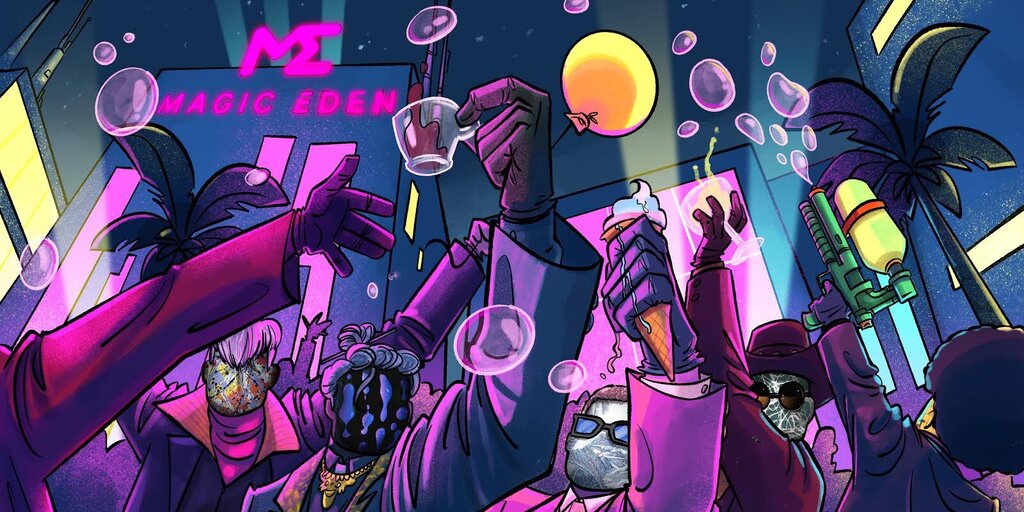‘Skull of Satoshi’ artist says he was wrong about Bitcoin mining
by James · March 27, 2023
Benjamin Von Wong, the Canadian artist who became Crypto Twitter’s protagonist last week after unveiling his “Skull of Satoshi” installation, said the work was “never meant to be anti-Bitcoin.”
– It was an optimistic hope Bitcoin could move away from unnecessary burning of fossil fuels without losing all the other features that make Bitcoin safe, secure and decentralized,” Von Wong wrote in a Twitter thread.
He also said that when he started working on the installation, he really believed that Bitcoin mining, which uses the proof-of-work (PoW) consensus algorithm, was “a simple black-and-white problem.”
“I’ve spent my entire career trying to reduce physical waste in the real world, and PoW intuitively felt like a waste,” Von Wong wrote. “Of course I was wrong.”
I was led to believe that Bitcoin Mining was a simple black and white problem. I’ve spent my entire career trying to reduce physical waste in the real world, and PoW intuitively felt like a waste.
Of course I was wrong.
Few things in the world are black and white. Stupid me. /4
— Von Wong (@thevonwong) March 25, 2023
The “Skull of Satoshi” was unveiled last week as part of the year-long campaign led by Greenpeace, the international environmental organization, which seeks to highlight “the enormous climate impact” of Bitcoin mining.
The initiative, supported by the other environmental organizations and the likes of Ripple founder Chris Larsen, is called “Change the Code, Not the Climate” and seeks to move Bitcoin to a more environmentally friendly proof of effort (Pos) mechanism. The move would mean changing the leading cryptocurrency’s underlying code.
After the fierce backlash the idea received from the Bitcoin community, Greenpeace now says it “does not necessarily suggest that Bitcoin should switch to an existing form of PoS.”
“We point to the fact that other cryptocurrencies realized that PoW has an energy problem and changed,” Rolf Skar, Special Projects Manager at Greenpeace USA, told Decrypt. “Bitcoin is the laggard in this area and sticks to decades-old technology while other newer cryptocurrencies use different consensus mechanisms and reduce carbon emissions.”
As for the artist himself, Von Wong said he spent the last few days talking to various members of the Bitcoin community and now wants “to take a break and refrain from engaging in more public discourse and spend more time quietly and privately on to observe and learn until I know exactly how my contributions can objectively contribute to helping the environment.”
“I first needed to put together some official responses to the Twitterverse and had been trying to digest all the different fragments of information that I received from different places,” said Von Wong Decrypt. “I’m trying to better understand the nuance between progress and perfection.”
Changing Bitcoin – Mission Impossible?
According to Greenpeace, which previously suggested that transitioning Bitcoin to PoS would require a soft fork, the organization is “optimistic about technological innovation and human creativity, so we’re not going to throw up our hands and declare that this is ‘impossible.’ “
“The climate crisis requires all of us – not just Greenpeace or Bitcoin – to find ways to ensure a fair and green future. We regularly work on problems that are objectively more complicated and difficult to figure out than changing Bitcoin’s code,” said Skar Decrypt. “It’s just impossible if we refuse to try.”
However, people who work closely with Bitcoin are far less optimistic.
“Every node in the Bitcoin network verifies that the new block header is less than the given number, defined by mining difficulty. If you change that rule, any nodes that don’t want to update to a new software version will fall out of consensus. It will effectively create a hard fork situation,” said Viacheslav Zhygulin, co-founder and CTO of stroom.network, a floating staking protocol for the Bitcoin Lightning Network. Decrypt.
According to Zhygulin, while Bitcoin’s open source code allows anyone to make changes, all major upgrades to the Bitcoin network over the past decade, including SegWit and Taproot, have been performed as soft forks, and that there is no chance of a successful hard fork anytime soon.
Unlike soft forks, hard forks are not backward compatible and require all node operators on the network to update to the latest software at a specified time.
“There is virtually no chance that a hypothetical Bitcoin at PoS will be accepted as the original Bitcoin, and it is highly unlikely that it will ever exist,” said Phil Harvey, CEO of Bitcoin mining consultancy Sabre56. Decrypt.
According to Harvey, the Bitcoin code is designed “to be virtually impossible to change”, as this requires the consent of all network participants.
“In the past, factions of nodes have vehemently rejected the code, but the resulting coins have not been considered Bitcoin anymore. This rigid design is largely due to the ideological commitment of the core developer and early adopter group to the principles of sound money. While they may abandon Bitcoin, it is very unlikely they will ever switch to a PoS system,” Harvey said.
The Sabre56 founder also said that the value of digital assets stems from their ability to solve financial and other problems.
“Bitcoin’s use case as a solid, decentralized, immutable, uncensored, globally accessible and self-sufficient reserve currency is intrinsically linked to PoW. Its pillars, such as the halving cycles, mining economics and block validation, all rely on this consensus mechanism,” said Harvey Decrypt. “Introducing PoS to the Bitcoin network will change its entire identity and value proposition.”


